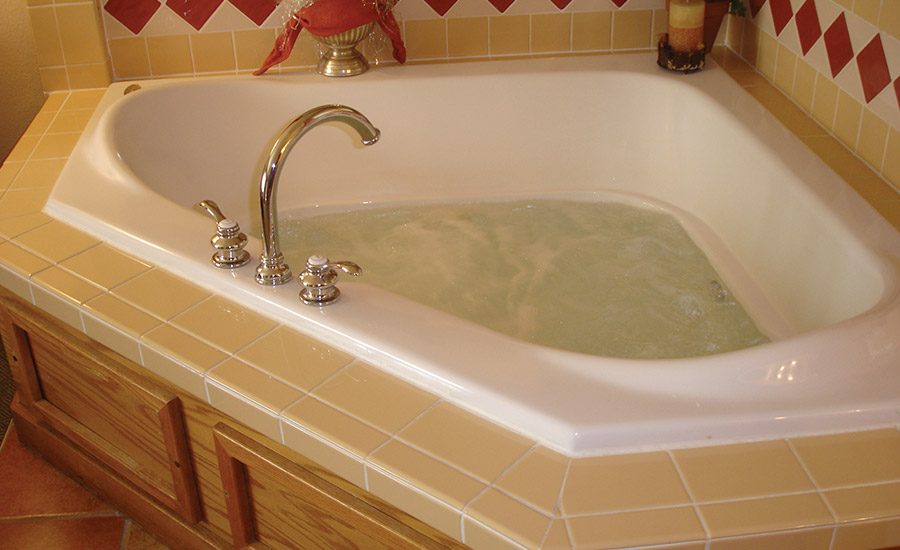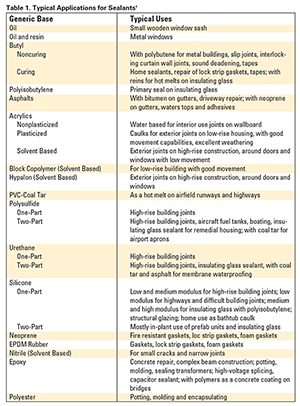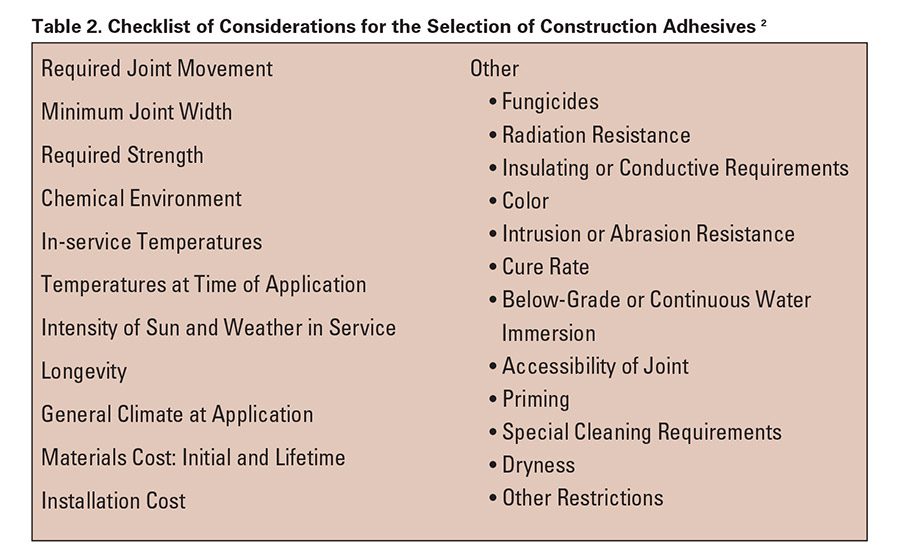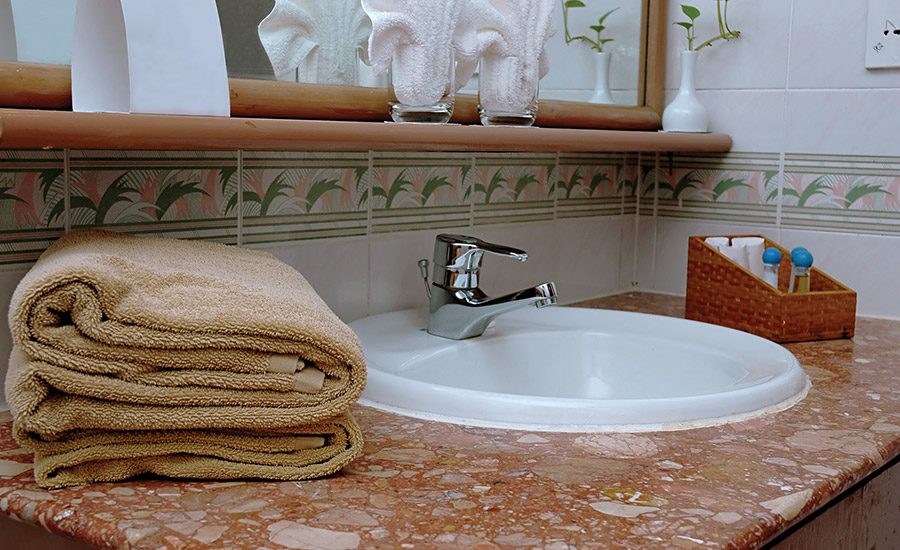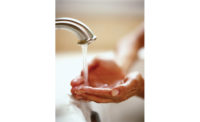Sealants are like adhesives in many ways. If fact, they are often considered to be together because some formulations can perform as either an adhesive or as a sealant, and some formulations actually provide both functions. Sealants, however, must perform distinctive tasks that put them in a separate category from adhesives. It is important that the sealant formulator recognizes and adjusts to suit these functional needs.
This article will review the special functions required of sealants. The methods by which the sealant performs these functions will be reviewed. Specifically, the application and performance characteristics of sealants will be addressed and correlated to the composition of the sealant formulation.
Functions of Sealants
Sealants are generally used as a barrier or a means of protection. In this way, sealants are used to exclude dust, dirt, moisture and chemicals, or to contain a liquid or gas. They are also often used as a coating to protect a surface or an article. They can eliminate noise and vibration, improve appearance, and perform a joining function. Sealants can also be used as electrical or thermal insulators and fire barriers, and they may also be used for smoothing or filleting. Indeed, sealants are often called upon to perform several of these functions at once.
No matter what the application, a sealant has three basic functions.
- It fills a gap between two or more substrates.
- It forms a barrier through the physical properties of the sealant itself and by adhesion to the substrate.
- It maintains sealing properties for the expected lifetime, service conditions and environments.
The sealant performs these functions by way of correct formulation to achieve specific application and performance properties. These properties are discussed in the following sections.
Unlike adhesives, there are not many functional alternatives to the sealing process. Soldering or welding can perhaps be used as a sealant in certain instances, depending on the substrates and the relative movement that the substrates will see in service. However, the simplicity and reliability offered by organic elastomers usually make them the clear choice for performing these functions.
Many sealants are designed for specific applications. Table 1 gives typical applications for various classes of sealants. The proper application of a sealant involves more than merely choosing a material with the correct physical and chemical properties. As with adhesives, the substrates to be sealed, the joint design, performance expectations, production requirements and economic costs must all be considered. Table 2 offers a partial list of considerations that are often used to select sealants in the construction industry.
Application Properties
The speed at which a sealant cures is crucial in some industries. Catalytic primers, two-component systems or controlled environments are used to increase cure rates. Depth of cure and the rate at which cure is achieved throughout the joint are other important considerations. Single-component sealants, such as silicones, urethanes and polysulfides, which depend on the diffusion of atmospheric moisture or oxygen into the sealant for curing, can take days or even weeks to cure entirely throughout the sealant bead. These sealants will develop a skin that will then inhibit the diffusion of water vapor to the center regions of the seal. In fact, some of these systems are limited to very small cross-sectional beads, otherwise they will never fully cure throughout.
Shrinkage on curing can be a crucial factor for sealant systems as well as adhesives. Excessive shrinkage can result in internal stresses and voids in the joint. Low-shrinkage products are those with very high or 100% solids, such as many of the two-component systems. Medium-shrinkage systems include hot-melt sealants that shrink as they go from a molten state to a gelatinous state. High-shrinkage systems are all solvent- or aqueous-based sealants in which shrinkage offers due to evaporation of solvent or water.
For improved gap-filling characteristics, some sealants are formulated to expand prior to curing. These sealants include automotive sealants with foaming agents in the formulation similar to the foaming agents used in packaging materials. Hot-melt formulations are also prepared with gases dissolved into the resin that will expand when heated. All of these formulations will expand before cure to fill in the joint gap and maintain positive pressure on the substrate as the sealant cures.
Foam-in-place gaskets promise to eliminate production bottlenecks in mass-produced automobiles, appliances, electronics and office equipment. These sealants are either hot-melt thermoplastic (e.g., ethylene vinyl acetate, butyl) or multicomponent curable thermosets (e.g., urethane). These materials can be applied directly to the joint, thus eliminating the need for die-cut gaskets and the resulting large quantities of scrap. Preformed solid gaskets conserve material but are labor-intensive and require secondary adhesives to install. In addition, because it can be applied in three dimensions, foam-in-place gasketing provides greater flexibility in joint design.
The sealant must wet the substrate and easily flow into the joint; therefore, it must be a liquid during application. However, if it is to remain in a vertical joint, it must behave as a solid. The former condition is met by using a liquid polymer or a solution of a solid polymer. In either case, the flow properties of the liquid must be such that flow is reasonable under a moderately applied stress, but ceases when the stress is small. This requirement is called thixotropy, flow control or anti-slump. It is obtained in sealant formulations generally by fillers if the base polymer is a liquid, or by solvents when the polymer is a solid.
When working with sealants, joint design considerations, such as crack bridging, coverage rates, color, practicality of placement, order of placement, unusual movement conditions, and aesthetics, must be addressed. One consideration that is required of sealants (but not generally adhesives) is appearance. A sealant material may be acceptable in all respects, but appearance problems could make it aesthetically unacceptable. Usually, sealants are easily visible whether the application is in the automotive, construction or appliance industries. Adhesives, on the other hand, are often hidden by the substrates. The sealant could also contain compounds that discolor surrounding areas. They can also be incorrectly applied so that the flow of liquids in contact with the sealant results in a residual buildup of extraneous matter at the joint.
An important consideration for any sealing operation is the relative ease of handling and applying the sealant. There are wide ranges of sealants available with varying degrees of application difficulty (single- and two-component sealants, primer and primerless sealant systems, hot-melt application systems, and sealants containing solvents). As with adhesives, the time required for the sealant to harden from a liquid into a semi-solid with some degree of handling strength is very important. Significant production properties include: cure rate, low-temperature flow characteristics, paint-over ability, color, self-leveling properties, non-bubbling properties, and cost.
Safety and toxicity effects are a concern when using certain types of sealants. Chemical reactions can cause the release of toxic fumes, heat, or possibly both. Solvent evaporation may contribute to a safety or heath hazard in the working place. Metering and mixing of multiple-component systems could bring personnel into direct contact with the components, resulting in dermatitis or other health-related problems.
Performance Properties
Important mechanical properties of sealants include elongation, compressibility, tensile strength, modulus of elasticity, tear resistance and fatigue resistance. Depending on the nature of the application, a sealant may require very little strength or great strength. The sealant must have sufficient mechanical characteristics to remain attached to substrates during service as well as to provide a barrier. The substrates could move considerably, requiring that the sealant expand and contract significantly without losing adhesion from the surface. Defining movement capability is a complex process. Temperature, rate of temperature change and joint configuration will influence the results.
In some applications, strength may be more important than elasticity. Low-strength or - more precisely - low tensile modulus may be the most important factor in a situation where a sealant joins one or more weak surfaces. Tensile strength is needed primarily to avoid cohesive failure under stress and so as not to transfer stress between substrates, as is the case with most adhesives.
Modulus can sometimes predict the extension or compression characteristics of a sealant. Generally, low-to-medium-modulus sealants are able to take significant movement without putting much stress on the sealant or the substrate materials. Some high-performance sealants are formulated for a higher movement capability than a joint is actually designed to accommodate. In fact, joints designed for about 25% extension/compression must often accommodate movement of 50% or more. Thus, higher- performance sealants provide an added safety factor. A change in elasticity or hardness on aging may be an indication that further curing or degradation is taking place.
Compressive strength is the maximum compressive stress that a sealant can withstand without breaking down or experiencing excessive extrusion from the joint. Compression set is the inability of a sealant to return to its original dimension after being compressed. High compression set is usually caused by further curing or degradative crosslinking of the material while under compression. Compression set is undesirable in a joint that needs to expand and contract. Stress relaxation is a condition in which the stress decays as the strain remains constant. Some very-low-modulus sealants literally get pulled apart when held at low elongation.
Sealants may be exposed to scuffing and mechanical wear. Examples include the sealant used as an expansion joint in the highway and the sealant used in preparing stone walkways. Thus, they must offer good abrasion, puncture and tear resistance. Flexible sealants, which are available in either chemical curing or non-curing types, exhibit varying degrees of tear resistance. Urethanes have the highest tear resistance. Dynamic loads, shock, and rapid variations in stress can also cause seals to fail. Thus, the consideration of tough and flexible elastomeric sealants that can stretch and then return to their original length in a short time should be the first step in the selection process for joints designed for mechanical loads.
Adhesion is also an important factor in determining a sealant's performance. The same rules of adhesion that apply to adhesives also apply to sealants. Adhesion is primarily affected by the physio-chemical interaction between the sealant material and the surface to which it is applied. However, in certain joints where there is great movement, strong adhesion of a sealant to a specific substrate may not be desirable. In these situations, the adhesive strength is stronger than the cohesive strength of the sealant, and the sealant may tear apart when it expands or contracts. This requires the sealant to be applied so that it does not adhere to all surfaces. To achieve this affect, a bond-breaker or release material at the bottom of the joint is generally used.
Conditions that will influence the adhesion of sealants include water exposure, temperature extremes, movement considerations and surface cleanliness. Often, a surface-conditioning process or a priming step is necessary to make a substrate compatible with a specific sealant.
Weatherability is defined as a sealant's degree of resistance when exposed to heat, moisture, cold, solar radiation, etc. The degree of weatherability is determined by the base polymer and the nature of the additives in the sealant formulation. Generally, sealants are formulated for maximum resistance to a single element, such as moisture. Often, this chemistry will lend its resistance to other elements as well.
In many situations, the appearance of the sealant is almost as important as its physical properties. Thus, most sealants are available in a variety of colors to match the environment in which they are used. Several questions must be considered when determining the appearance requirements of sealants.
- Does a sealant cause discoloration of surrounding areas initially or over a period of time?
- Does water runoff over the material cause unsightly residues?
- Does one product cause discoloration of another?
- Does the product itself change in appearance over time for any reason?
Sealants can have a chemical effect on the substrate. Chemical incompatibility could cause the sealant or substrate to soften, harden, crack, craze, inhibit cure, or cause other changes. An example of this would be the use of an acid cure sealant (such as a silicone sealant) on a surface like concrete, marble, or limestone. On these surfaces, an acid/base reaction can cause the formation of bond-breaking salts at the bond-line. Another example of chemical incompatibility is the bleed of plasticizers or other low-molecular-weight volatiles through sealants, causing them to discolor after exposure to sunlight. This happens frequently when sealants or coatings are applied over asphalt or organic rubber-based materials that are formulated with low-molecular-weight plasticizers.
Sealants may also need to be compatible with a specific environment for certain applications. Examples of this may be a requirement for a sealant to have USDA or FDA acceptance because food or drugs are to be processed in the area near the sealant. It may happen that, in an installation such as a food processor or clean room, the sealant cannot outgas or liberate certain chemical components either during or after cure. Another end-use requirement could be that the sealant must meet certain fire-resistance properties to meet code requirements in housing construction or another area of use.
Formulations
A range of materials and formulations is available for preparing sealant products that meet a specific need. Most sealants, however, are compromise formulations. That is, manufacturers formulate their products to meet a variety of applications. These products, then, meet a majority of needs, while the final choice rests with the informed user. Most sealants are capable of meeting a variety of standards relative to joint movement and other properties.
Modern demands for increased productivity, higher performance and environmentally safer materials have led to a decline in the use of some of the older chemistries, particularly solvent-based sealants. Over the past several years, polyurethanes have become one of the mainstays for the sealing of building joints. Silicones have had success in structural glazing applications due to their favorable performance in weathering, particularly UV resistance. During this time, polysulfides have been losing ground.
Like adhesives, sealant formulations contain a base polymer that is modified by many possible extenders and adders. However, sealant formulations are usually more complex than adhesive formulations because of the many compromises that must be made regarding application, curing and performance characteristics. The sealant's material cost is also often an important criterion for certain industries because of the high volumes of material that are be used.
Modern sealants are generally formulated from synthetic elastomeric polymers. Many of these modern sealants were commercially unavailable before the early 1960s. Some of the polymers that have been used to formulate sealants include polysulfides, polyurethanes, chloroprenes, acrylic, butyl and chlorosulfonated polyethylene. Like adhesive systems, sealant formulations contain base polymer, fillers, plasticizers, thixotropic agents, adhesion promoters, catalysts, curing agents and other ingredients. Various external accessory materials, such as primers, bond-breaker tapes, back-up materials, and other aids, may also be needed during the application stage to provide for an effective sealant joint.
Many other additives similar to adhesive system additives are used for sealant formulation to provide special performance, application, or storage properties. For example, antibacterial agents and freeze-thaw cycle suppressants are commonly used in water-based sealant formulations, as well as with adhesives. Many sealant additives are required to accomodate long-term outdoor exposure or color matching. Sealant formulations may also include UV absorbers and ozone inhibitors, to prevent any undesirable sensitivity to outdoor environments. Linear hydrocarbon rubbers are especially sensitive to sunlight and ozone, and are generally used only for indoor applications.
If a sealant's long-term performance and weatherability are important to an application, contact the sealant manufacturer and ask for the results of accelerated testing performed for their sealants on specific substrates and under specific loading and environmental conditions. Such data are often available and can identify at least a family of sealants that may be candidates for the application.
References
- Panek, J.R.; Cook, J.P., Chapter 2, Construction Adhesives and Sealants, John Wiley & Sons, New York, 1991.
- Dunn, D.J., “Sealants and Sealant Technology,” Engineered Materials Handbook, Vol 3: Adhesives and Sealants, ASM International, 1990.
